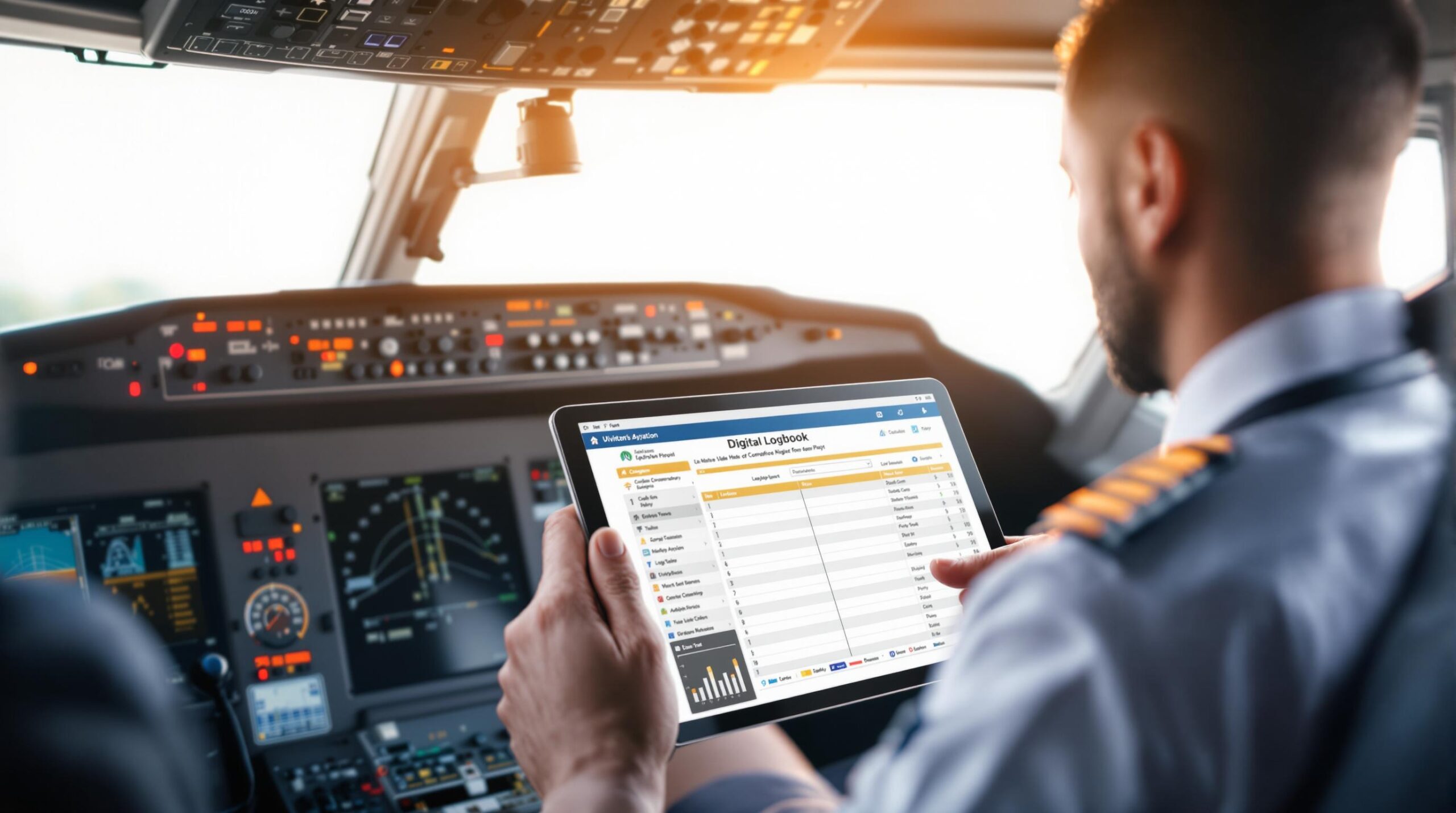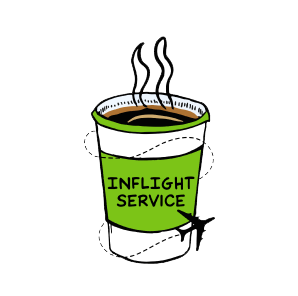Logbook integration simplifies how pilots manage and transfer flight data during airline applications. It automates tasks like converting military flight hours, formatting data for different airlines, and ensuring compliance with FAA and EASA standards – saving time and reducing errors. Here’s what you need to know:
- Why It Matters: Avoid manual entry errors, meet airline-specific formats, and securely store data in the cloud.
- Key Features:
- Import & Export: Supports CSV, TXT, and PDF for easy data handling.
- Custom Reports: Track career progress, duty logs, and compliance.
- Direct Integration: Sync flight data with airline application systems in real time.
- Top Tools: Pilot Pathfinder automates applications and offers military-hour conversions, while LogTen focuses on advanced time tracking.
Quick Comparison:
| Feature | Pilot Pathfinder | LogTen Pilot Logbook | My Pilot Log |
|---|---|---|---|
| Auto-Fill Applications | Yes | Limited | No |
| Military Conversion | Yes | No | No |
| Resume Building | Yes | No | No |
| Cloud Storage | Yes | Yes | Yes |
Logbook tools are essential for pilots to streamline applications, protect data, and stand out in their careers.
Features to Look for in Logbook Integration Tools
Importing and Exporting Flight Data
Managing flight data is much easier with modern logbook tools. They support various import formats and bulk transfers, making them compatible with a wide range of airline and crew systems. This not only saves time but also ensures data accuracy when switching between paper logs or different digital platforms. Look for tools that handle common file types like CSV, TXT, and PDF, and offer bulk import options to simplify transitions.
Custom Reports and Data Syncing
Good reporting features let pilots create official documents for regulatory needs and career tracking. These reports can cover things like currency tracking, experience summaries, and duty time logs. They help pilots stay compliant with regulations, keep safety in check, and monitor career growth. Tools that allow for tailored analytics make it easier to track progress and maintain essential documents.
Connecting to Airline Application Systems
Direct integration with airline application platforms minimizes errors during the application process. These systems simplify the process by automatically formatting data to meet airline standards and providing updates in real time. Features to look for include:
- Real-time updates for logged flight hours
- Automatic synchronization of data
- Instant verification of experience requirements
Once you’ve identified the right features, learning to set up and use logbook integration tools effectively will help streamline your application process.
How to Set Up and Use Logbook Integration Tools
Setting Up Logbook Integration
Getting your logbook integration up and running involves a few key steps. Here’s what you need to do:
1. Export and Prepare Your Data
Start by exporting your flight records from your current system. Most logbook apps support formats like CSV, TXT, XLS, or XLSX. Double-check that all required fields are correctly formatted to avoid import errors during the process.
2. Configure Integration Settings
Head to your platform’s user dashboard, app settings, or profile section to set up the integration. Follow the platform-specific instructions to connect it with your flight management system.
3. Verify and Test
Before finalizing, run a test import. This helps you confirm the data is accurate and spot any issues that need fixing.
Maintaining Data Security and Accuracy
Keeping your logbook data secure and accurate is essential. Here are some tips to help:
- Schedule automatic backups to avoid losing data due to theft or hardware issues.
- Use encryption to protect your information during storage and transfers.
- Store your data in the cloud with version tracking for easy recovery.
- Sync your logbook across devices to keep records consistent.
- Regularly review your entries to ensure everything is correct.
| Security Feature | Purpose | Implementation |
|---|---|---|
| Encryption | Protect sensitive data | Enable built-in encryption tools |
| Cloud Backup | Prevent data loss | Schedule daily automatic backups |
| Version Control | Track changes | Maintain backup history |
"Data loss and intellectual property theft are a business issue, not an IT issue", says a Chief Information Security Officer, highlighting the importance of secure logbook management.
For smoother data entry, consider customizing your interface to show only the fields you need most. Auto-fill features can also save time by handling frequently used time fields. Regularly checking your records ensures everything stays accurate.
Once your integration is set up, you’re ready to explore tools to streamline your workflow even further.
sbb-itb-de05b1b
Top Tools for Simplifying Pilot Applications
Pilot Pathfinder: Features and Pricing

Pilot Pathfinder simplifies pilot applications with features like browser plug-ins and secure logbook storage. It offers three subscription options:
| Plan | Price | Features |
|---|---|---|
| Basic | Free | Auto-Fill, Basic Logbook Management |
| Pro | $29/month | Auto-Fill, Interview Prep, Resume Builder |
| Enterprise | Custom Pricing | Organization-Wide Tools, Custom Integrations |
While Pilot Pathfinder provides a comprehensive solution, there are other tools worth considering, each with its own strengths.
Comparing Logbook Integration Tools
LogTen Pilot Logbook stands out for its advanced time tracking and real-time currency alerts. It integrates with other aviation tools, creating a seamless system for tracking flight data.
When choosing a tool, ease of setup and feature compatibility are key. Here’s a side-by-side look at popular platforms:
| Feature | Pilot Pathfinder | LogTen Pilot Logbook | My Pilot Log |
|---|---|---|---|
| Auto-Fill Applications | Yes | Limited | – |
| Military Conversion | Yes | – | – |
| Interview Prep Tools | Yes | – | – |
| Dynamic Time Tracking | Basic | Advanced | Basic |
| Cloud Storage | Yes | Yes | Yes |
| Resume Building | Yes | – | – |
LogTen Pilot Logbook excels in flight tracking and real-time alerts but lacks automation for applications. On the other hand, Pilot Pathfinder’s automation and career-focused tools make it an excellent choice for pilots aiming to streamline their application process and focus on career growth.
LogTen Pro Electronic Logbook Review

Summary of Logbook Integration Benefits
Logbook integration tools simplify flight data management by automating tasks, saving time, and minimizing errors.
1. Improved Data Accuracy and Security
Cloud-based systems securely store flight data and handle specialized needs like converting military flight hours to civilian formats. This not only safeguards critical records but also ensures compliance with regulatory standards.
2. Simplified Application Process
Automation tools, such as auto-fill features, cut down on repetitive tasks, making it easier to submit consistent and accurate applications – especially useful when applying to multiple airlines at once.
3. Career Growth Support
Some platforms, like Pilot Pathfinder, go beyond data tracking. They offer detailed reports and career resources, helping pilots stand out during the hiring process.
To get the most out of these tools, pilots should look for platforms that provide:
- Automatic tracking of flight hours and currency
- Integration with airline application systems
- Strong data security and backup options
- Customizable reporting features
- Resources for career advancement
As aviation increasingly adopts digital solutions, these tools are becoming essential for managing applications efficiently. Whether transitioning from military service or advancing in a commercial career, they make the process smoother and more effective.




